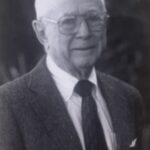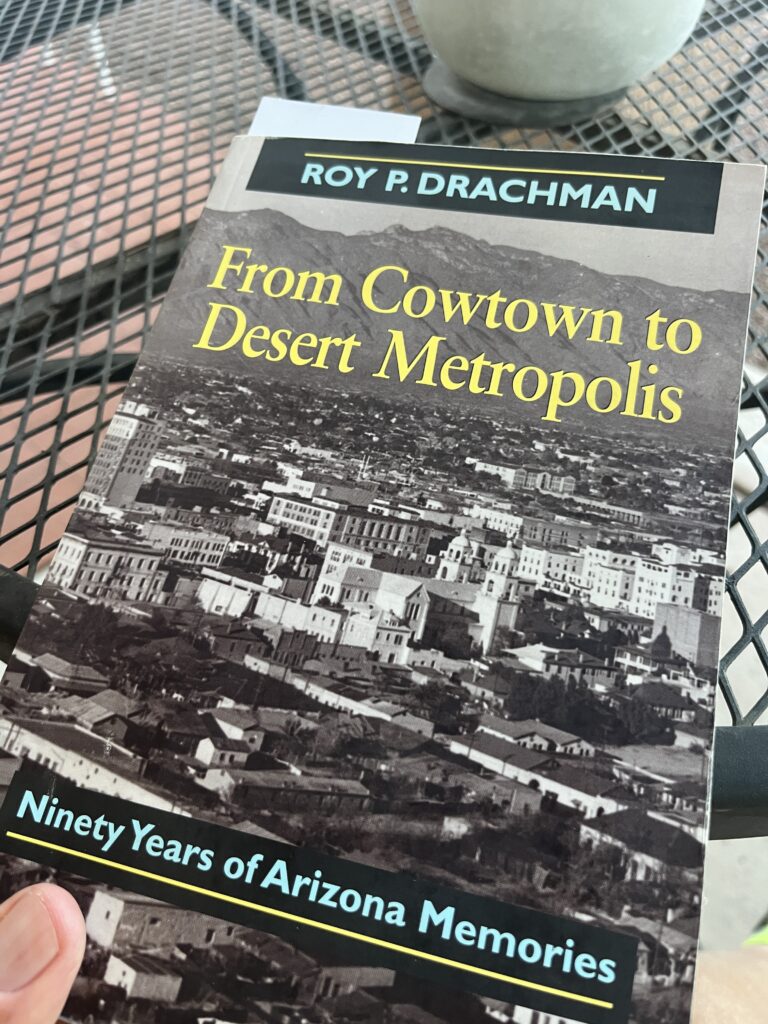 Drachman is the name of a street in my old neighborhood off. And growing up here, I knew the name. I really didn’t know much about the family behind the name and the impact they had and knew of until I read this book.
Drachman is the name of a street in my old neighborhood off. And growing up here, I knew the name. I really didn’t know much about the family behind the name and the impact they had and knew of until I read this book.
As I continue my discovery of history and information about hometown during this third act, I have been roaming the aisles of bookstores. This volume jumped into my hands off the shelf of the eastside Bookmans. Roy P. Drachman’s “From Cowtown to Desert Metropolis: Ninety Years of Arizona Memories,” answered a lot of questions, filled in some blanks and also took me down some new paths.
And while it reads like a transcript of a grandparent telling rambling stories at the dinner table or beside a fire, it is a great recounting of one man’s life. Few of us get to spend our lives in our hometowns. Even fewer get to be an eyewitness to key times in history. He was born in Tucson in 1906 and passed in 2002.
Drachman recounts everything from early school days to his high school days and onto his college and adult years. And not necessarily in a straight line. However, his summation in the form of “milestones” at the end was a great way to frame the history of Tucson:
- The decision by the community to become a tourist and health center.
- The availability of air cooling (in the form of swamp box coolers).
- World War II’s impact on the city.
- Hughes Aircraft’s decision to locate in Tucson.
- The Pioneer Hotel fire.
- Losing the Arizona Daily Star and Tucson Daily Citizen newspapers to corporate, out-of-town ownership.
- The city’s refusal to welcome Motorola.
In between he talks about the founding of the U of A Medical School, urban renewal, zoning and planning and the social fabric of the city. He brings up names, some familiar (Ronstadt, Mansfield, Steinfeld) and many not. But, as in some of the other cities I’ve been fortunate enough to live in, I can recognize the impact and importance individuals and families can have on a community. . Many of the names my dad would discuss over dinner when I was a child.
And I can see how Milestones 3 and 4 impacted my own life: my parents were post-WWII transplants. The end of the war brought them here and the boom that followed kept them here–and me into the late 1970s.
This book helps give me a perspective I didn’t have before I left. Now that I’m back, putting this in context of my own life experiences with what I had known about Tucson, helps me in this third act.
Nice meeting you, Roy.
Relentless

